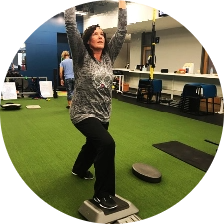Services
Pelvic Pain

Chronic pelvic or rectal pain is a common and frustrating problem. It usually affects woman more than men. Symptoms are often vague and difficult to pin-point, but patients typically complain of pain, pressure, or discomfort in the rectum, pelvis, sacrum, or tailbone. Symptoms may have been present for months or years by the time a diagnosis is made. Other symptoms include a feeling of heaviness in the pelvis, low back pain, thigh pain, and pain with intercourse. Patients may notice that the symptoms are worse with prolonged sitting, physical activity, bowel movements, menses, or psychological or general physical tension. In many patients chronic pelvic pain is caused by the inability to control the pelvic floor muscles, also called pelvic floor dysfunction. The muscles of the pelvic floor feel tight and constantly contracted, which is uncomfortable and can lead to long-term damage.
Pelvic pain, discomfort, or a sensation of heaviness in the lower abdomen or pelvis for six months or longer is one of the main symptoms of pelvic floor tension myalgia. Since the pelvic floor is the seat of organs such as the bladder, uterus, vagina, and rectum, there are other signs and symptoms to watch out for as well, including:
- Pain that intensifies with certain movements or that is relieved by repositioning the body
- Pain during sexual intercourse
- Difficulty urinating
- Frequent or painful urination
- Urinary incontinence
- Difficulty passing stool
- Bloating and constipation
- Lower back pain
Cause of Chronic Pelvic Pain
Your pelvic floor muscles support your reproductive organs, bladder, and rectum. Typically, these muscles tense when needed, then relax again. In some women, however, the pelvic floor muscles spasm or remain in a state of tension.
Risk Factors
The direct cause of pelvic floor tension myalgia is unknown, but several factors may contribute to its development, including:
- Inflammation of the pelvic organs
- Injury to the pelvic floor muscles during surgery or childbirth
- Nerve damage
- Post-surgical scarring
- Endometriosis
- Interstitial cystitis
- Poor posture
- Obesity
- History of sexual abuse
- Aging
Treatment
Most often with pelvic pain there is a dysfunction in the ability to relax the pelvic floor muscles. The Superior Method for Pelvic Pain Relief includes an extensive assessment of the pelvic floor musculature. We utilize the principles of chain reaction biomechanics, which allows us to assess the entire body and its ability to move effectively. Proper movement in the areas above and below the pelvis must be occurring in order to load or lengthen the pelvic floor muscles, allowing them to relax and contract when needed.
Using the Superior Method for pelvic pain relief, we re-train the pelvic floor muscles to active and relax correctly. In addition to therapy in our clinic or via Telehealth (online), we create an individualized at-home video program. This makes it easy for patients to follow along with the video in doing their therapy “homework”.
We also provide access to an online course called MyCoreFloor, that fully explains pelvic floor problems and how to handle them in order to find permanent relief and get back to normal. You can learn more about this online course here www.NoMorePads.com













